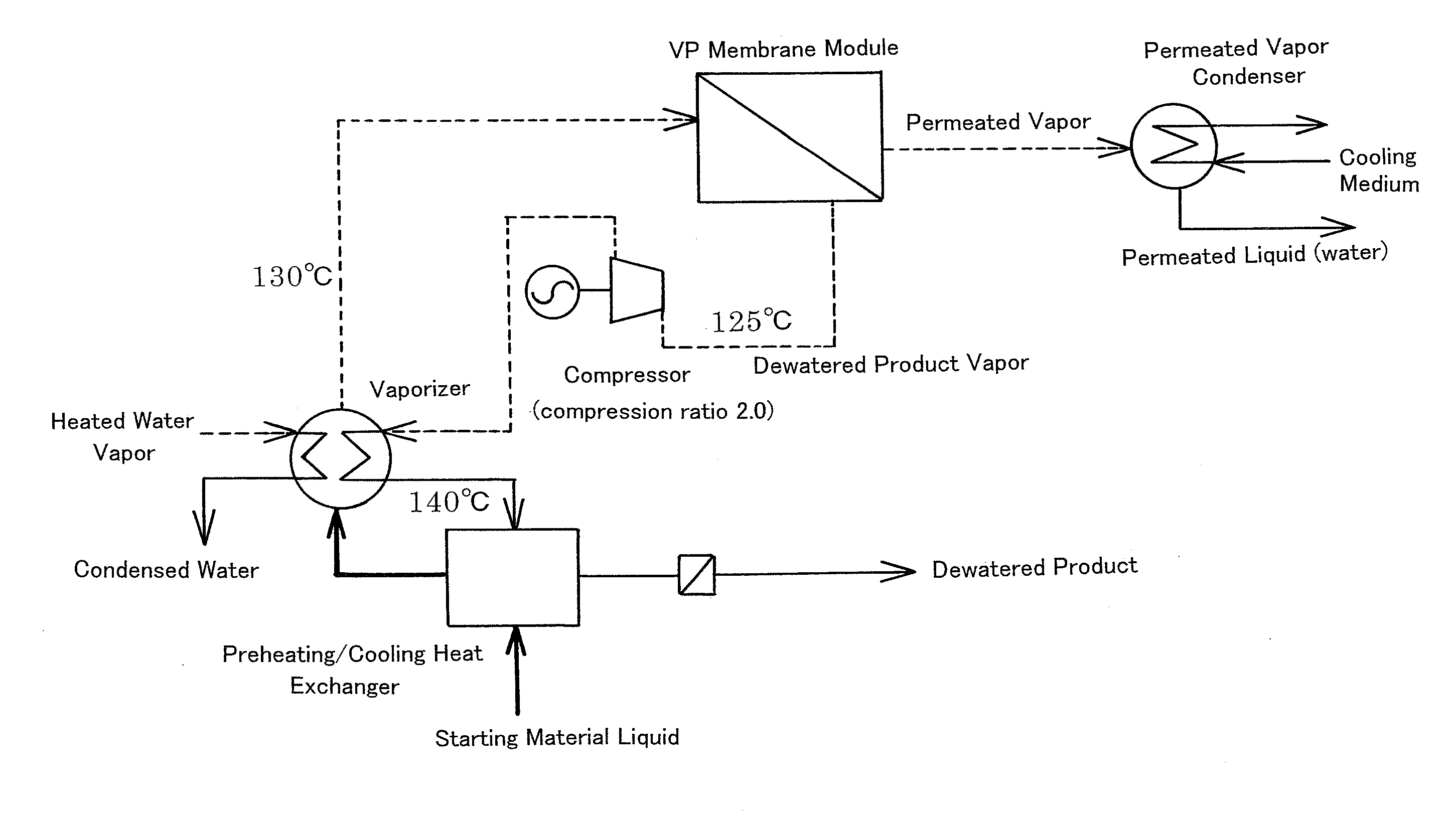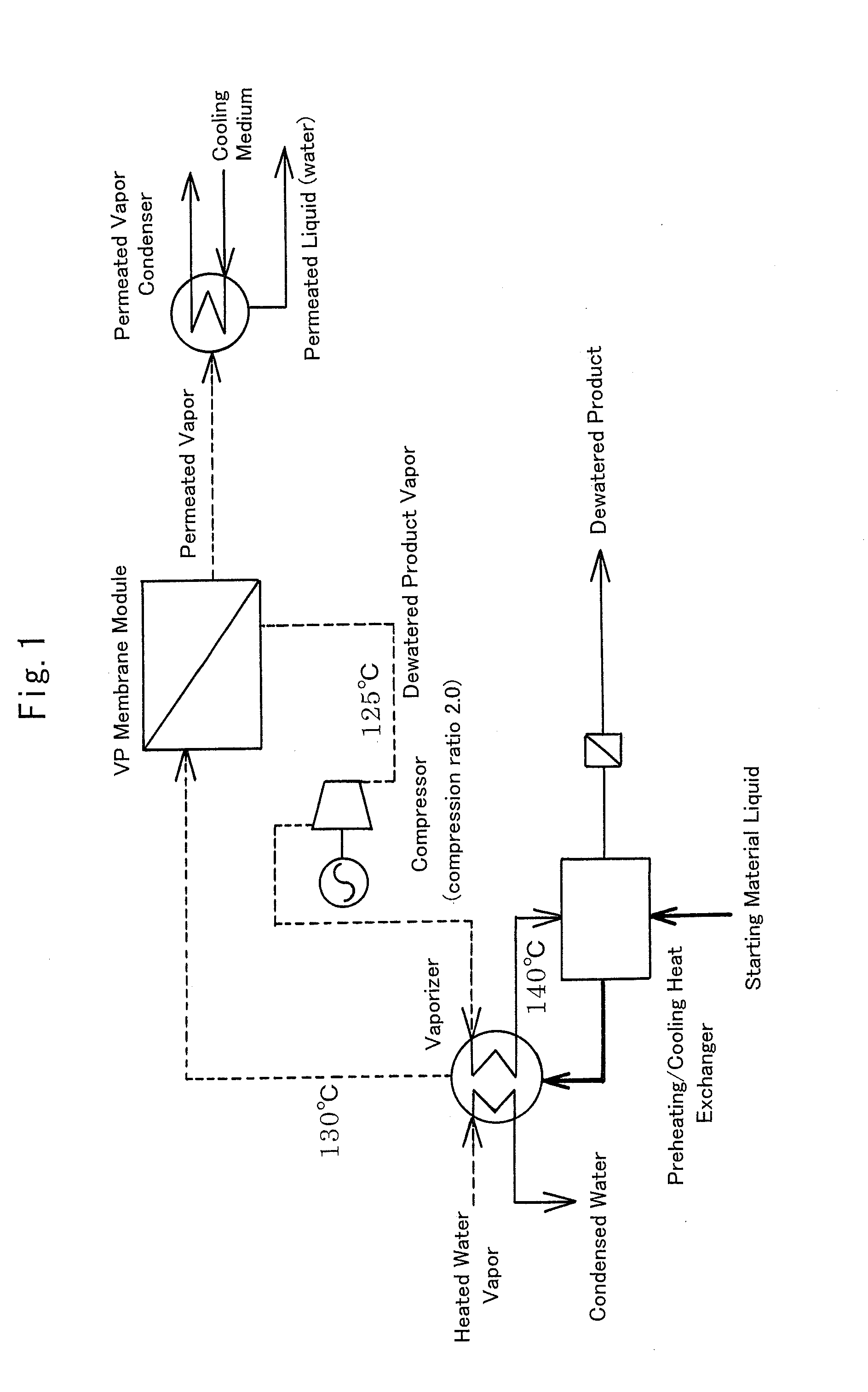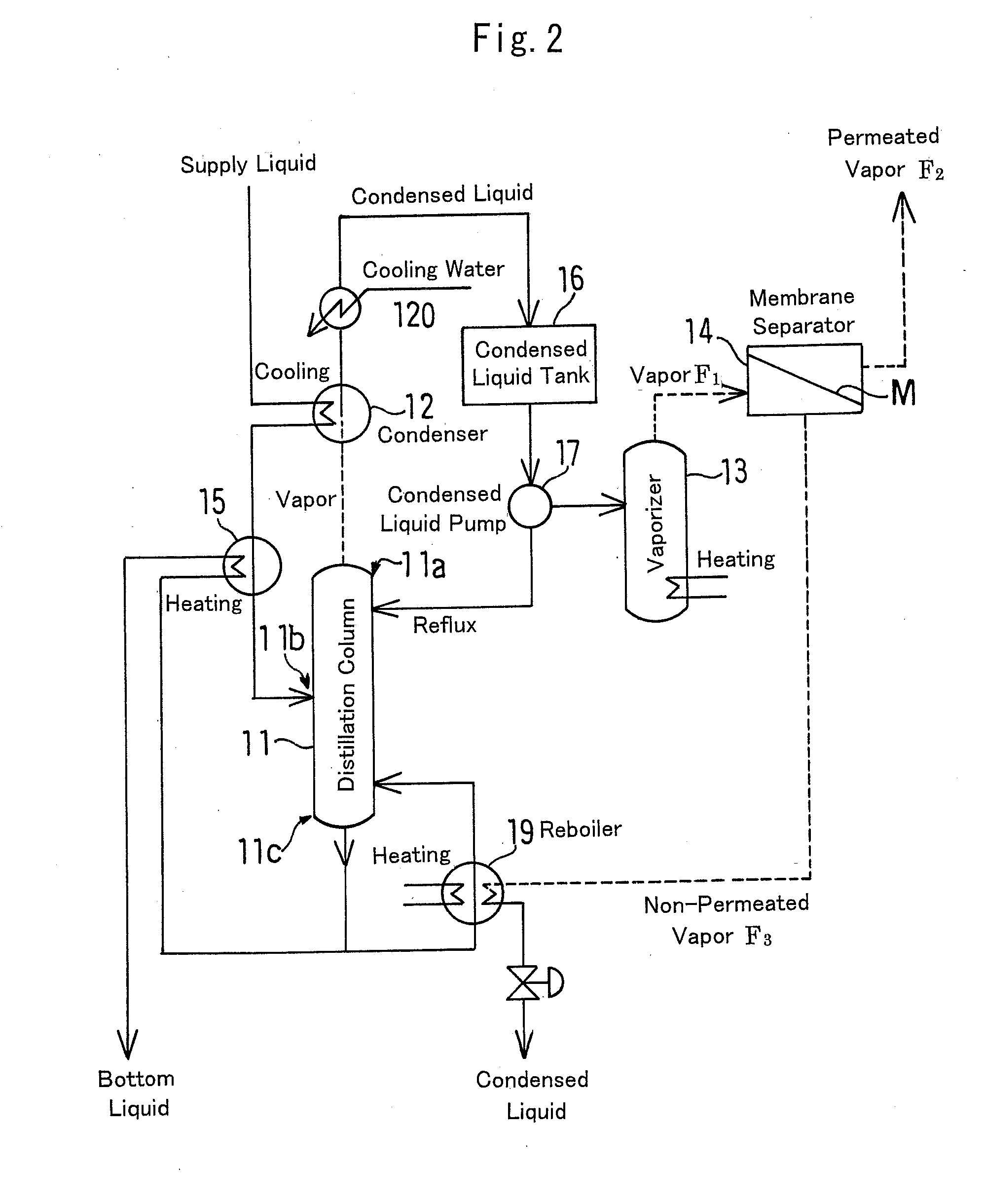Method for dewatering water-containing organic substance
- Summary
- Abstract
- Description
- Claims
- Application Information
AI Technical Summary
Benefits of technology
Problems solved by technology
Method used
Image
Examples
example 1
[0055]FIG. 1 shows the basic constitution (basic flow) of the invention. Some modification and change made by ordinary knowledge of those skilled in the art should not overstep the subject matter of the invention.
[0056]The liquid starting material, water-containing ethanol (having a concentration of 92.5 wt. % (95.0 vol. %) at a temperature of 30° C. and at a feed rate of 7,200 kg / h) is first introduced into a preheating / cooling heat exchanger, in which the dewatered ethanol liquid product (having a concentration of 99.7 wt. % (98.0 vol. %) at a yield of 6,600 kg / h (200 kL / day)) is cooled (the mean specific heat of the product liquid in cooling from a temperature 140 to 37° C. is 0.765 kcal / kg·° C.) and simultaneously the liquid starting material is preheated.
[0057]The liquid starting material is an aqueous ethanol solution having a concentration of 92.5 wt. % (95.0 vol. %), and the feed rate thereof is 7,200 kg / h. The mean specific heat in heating from a temperature 30 to 130° C. i...
PUM
 Login to View More
Login to View More Abstract
Description
Claims
Application Information
 Login to View More
Login to View More - R&D
- Intellectual Property
- Life Sciences
- Materials
- Tech Scout
- Unparalleled Data Quality
- Higher Quality Content
- 60% Fewer Hallucinations
Browse by: Latest US Patents, China's latest patents, Technical Efficacy Thesaurus, Application Domain, Technology Topic, Popular Technical Reports.
© 2025 PatSnap. All rights reserved.Legal|Privacy policy|Modern Slavery Act Transparency Statement|Sitemap|About US| Contact US: help@patsnap.com



